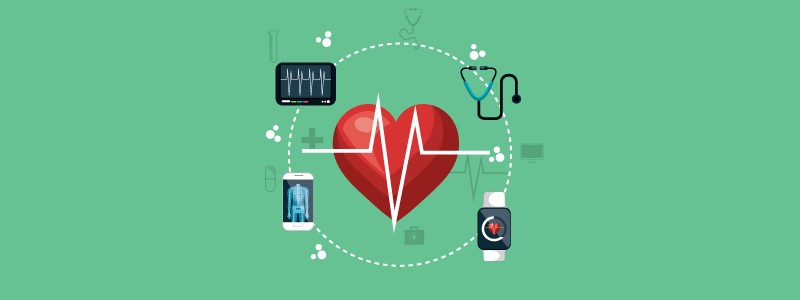In the DC bubble, we like buzzwords. Recently, “digital health” joined “blockchain” and “artificial intelligence” on a growing list of phrases that make us feel hip. But what does digital health really mean? To the Connected Health Initiative (CHI), it does not mean turning everyone into their own healthcare professionals, a concept often referred to as the “consumerization” of healthcare. People don’t want to be their own doctors. Consumer behavior reveals that people want healthcare to be accessible and cost-effective when they need it—they don’t want healthcare obligations to invade parts of their everyday lives unless they must. No, connected health is not the consumerization of healthcare. And it’s certainly not about supplanting doctors with robots and software. To us, connected health is just a means to an end: using technology to cost-effectively and seamlessly connect patients with their caregivers and augment caregiving capabilities. Because of healthcare’s idiosyncrasies (prodigious amounts of regulation, the vast complexity of insuring different types of care, etc.), simply allowing tech-driven tools to help is a Herculean policy undertaking. Meanwhile, consumers now have access to technologies that can help them avoid—or manage—chronic conditions like never before. Even more importantly, consumers actually want these technologies because they are woven into everyday items like watches.
Our own resistance to everyday healthcare management (at least when inconvenient) is frustrating because somewhere in the back of our minds we all know how far a little prevention can go. Exercise, a sensible diet, and plenty of sleep are invaluable preventive measures that, if engaged in by at-risk populations, would save taxpayers and insurers billions of dollars that would otherwise be spent on treatment of chronic conditions. Federal policy that promotes prevention in a way that meets consumers where they are—as opposed to trying to entice them to engage in activities that they constantly resist—is, therefore, a desirable goal. Moreover, connected health is not just about prevention. In fact, digital tools will soon be a necessary component of general medicine, as the current physician shortage balloons to 90,000 over the next 15 years, stretched even thinner by a senior population set to increase by 30 million in the next 12 years. Physicians will need all the help they can get to directly access their patients, and individuals will likewise want to bypass lines at the doctor’s office and access their healthcare professionals using the supercomputers in their pockets. Now that software and hardware can facilitate such interaction, we should be doing everything within our power to get these technologies into the hands of consumers.
Manufacturers are introducing connected devices to the market that collect, store, and transmit clinical data—but also have non-medical functions. The latest Apple Watch can monitor your electrocardiogram (heart rate) readings and can record catastrophic falls that are likely to necessitate immediate medical attention. These functionalities are extremely valuable to care teams, even if the wearer does not have a chronic condition. For example, people who are at risk of atrial fibrillation (AFib) episodes aren’t always considered to have a chronic condition, but a wearable that can detect such an episode and alert the patient’s physician immediately could save the patient’s life. Similarly, the Garmin Fenix 5X Plus measures pulse oximetry, which (when paired with heart rate) can be used to detect and monitor sleep apnea, asthma, and allergies. Monitoring metrics like these can help consumers avoid medical incidents that would otherwise be undetectable or unreported until the problem is too far along to treat. But the wearable devices described above aren’t cheap to make, and they carry substantial price tags.
Providing targeted tax advantages can help offset the costs of wearables and other devices and software platforms that collect and transmit patient-generated health data. Unfortunately, while glucose monitors, thermometers, contact lenses, and sunscreen enjoy tax-advantaged status because they are eligible for flexible spending accounts (FSAs), wearable devices that monitor for AFib or pulse oximetry are not includable expenses. This makes little sense. If the tax code recognizes the preventive power of sunscreen, why shouldn’t it also recognize the preventive value of monitoring heart rate, stress levels, and blood oxygen? A statutory change that includes such expenses in FSAs is unlikely to cost much—unused FSA funds go back to the employer, not the government. And when it comes to providing a tax advantage for items consumers already want (but balk at the price tag), a little can go a long way. Congress should pass legislation to solve this inequity and clarify that consumers can use their FSAs to purchase devices and platforms that collect and analyze physiological data. We are finally starting to see how much healthier we can be if we pay attention to—and act on—the data our bodies generate. Let’s not miss the opportunity to harness our data for healthier lives.
